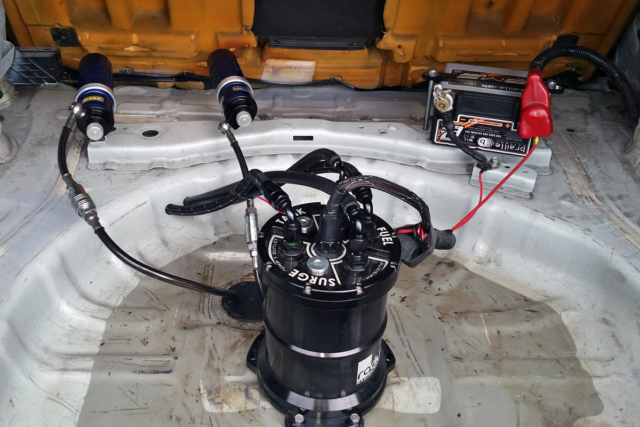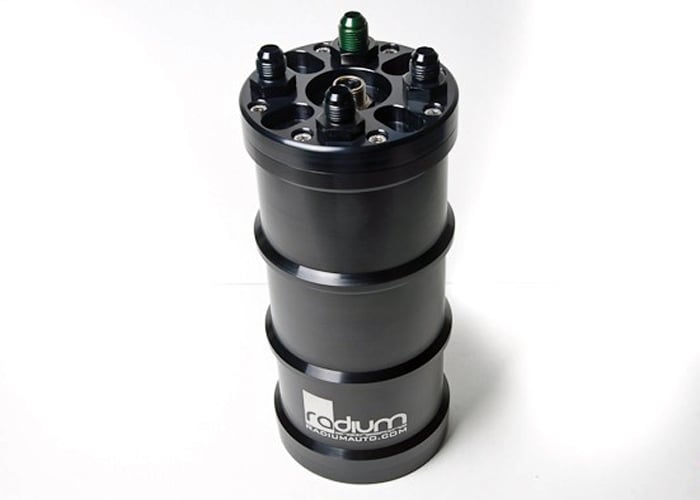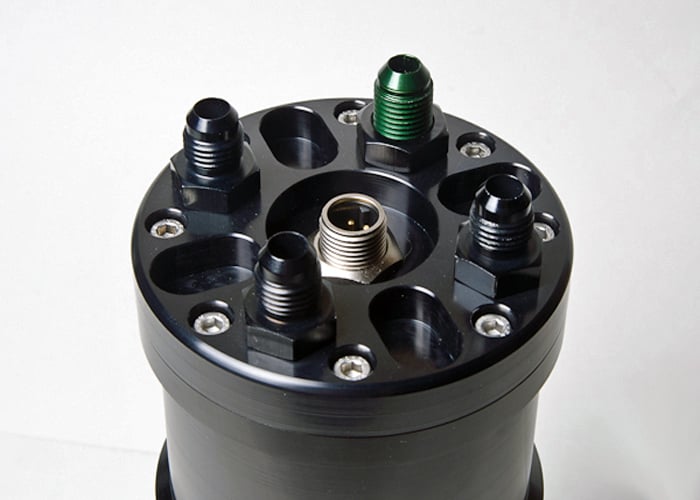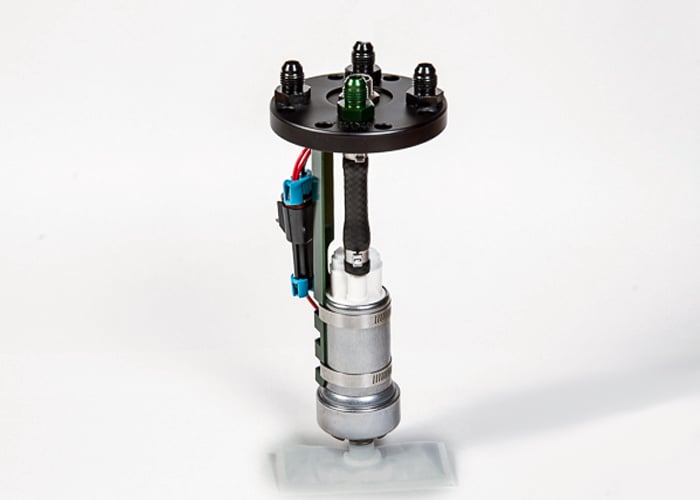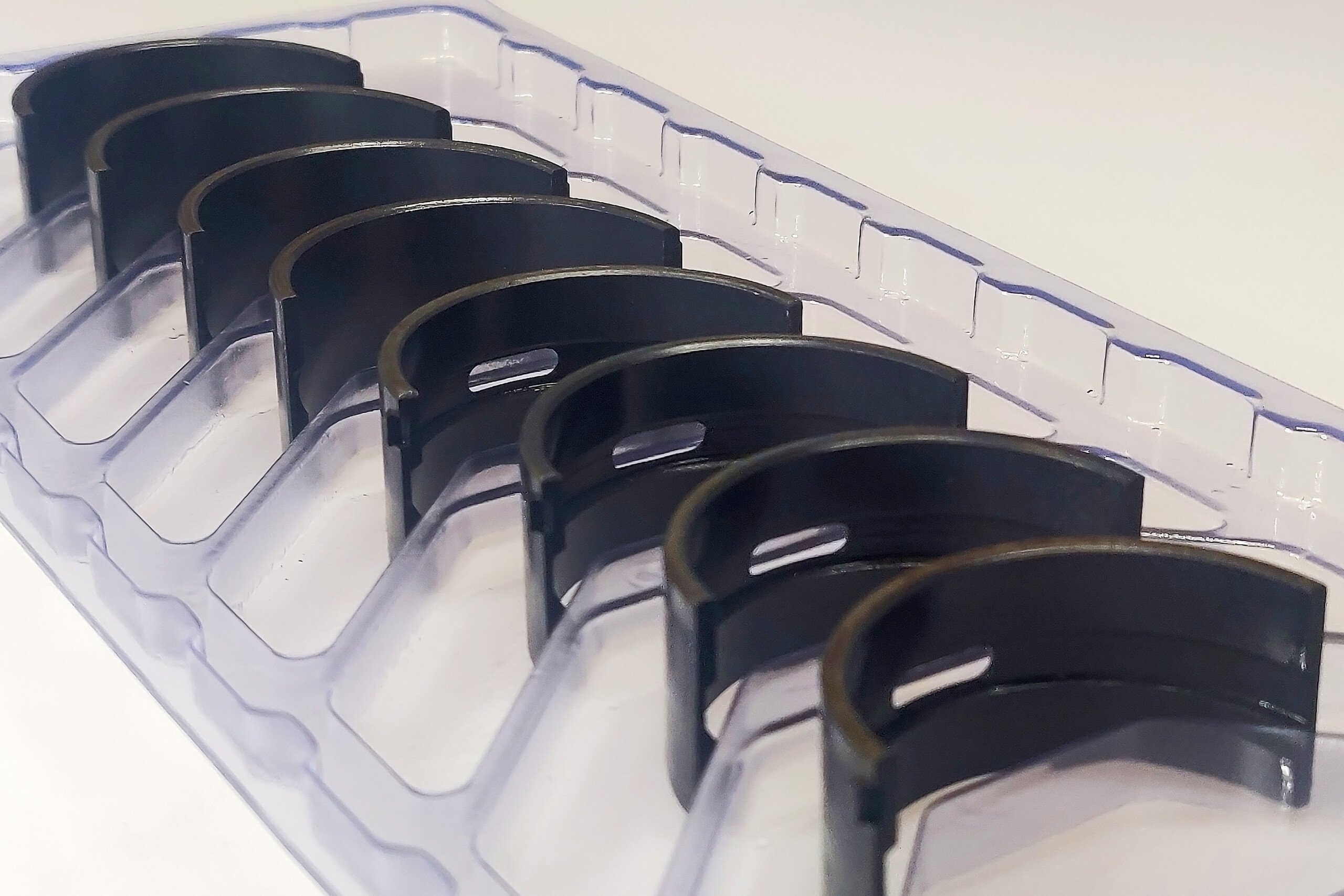Thanks to major advancements in automotive technology in recent years, many enthusiasts are able to use their high powered vehicle for double duty as both a racecar and streetcar, which was almost unheard of less than a decade ago.
This led many to avoid using an aftermarket fuel cell for a variety of reasons, from the inconvenience of filling most designs, the possibility of smelling fuel in the cabin, to safety concerns in a collision, and even the lack of support for many factory fuel level meters.

A fuel cell (right) installed in a 2014 Camaro SS. Notice the amount of free space the fuel cell takes up inside the trunk.
These performance streetcars were also checking off plenty of miles at the race track, where fuel starvation became a frequent cause of track side engine failures. Whether from an inadequately baffled factory tank sloshing fuel away from the in-tank fuel pump in a high-G sweeping turn, or an unreliable gravity feed to an external pump, both can kill fuel pumps at higher voltages due to cavitation (air pockets) and can even melt pistons if it gets too lean at higher loads.
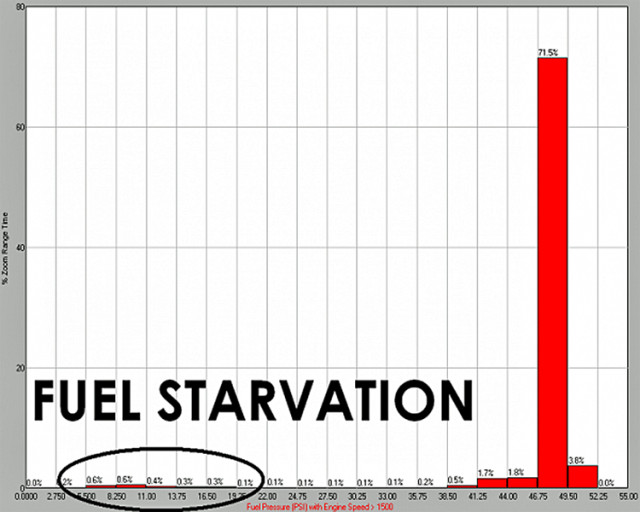
A graph showing fuel pressure readings above 1,500 RPM from a car on a road course. Fuel pressure should never drop below 43.5 PSI for this setup.
FST To The Rescue
One of the most popular solutions to combat cavitation and fuel starvation related failures while also increasing fuel flow is the addition of a fuel surge tank (FST) or swirl pot. These systems essentially work as a constantly filled miniature fuel tank that’s installed inline between the factory fuel tank and the fuel rail. It is used with a variety of large internal or external pumps, and even high output multi-pump setups.
The guys at Real Street Performance made the awesome video above explaining some of the different ways a surge tank can work to your advantage.
A Radium Engineering fuel surge tank with a single internal pump and four ports on top. One high pressure outlet (green), two low pressure inlets, and a low pressure outlet.
Your standard single pump surge tank usually features a high pressure outlet on top of the FST that is connected to a higher flowing fuel pump within the surge tank, which then replaces the OEM feed line that would normally connect to the fuel rail to feed the engine. One of the two low pressure inlets is then connected to the outlet port on the factory location fuel pump and is used as a low pressure lift pump to keep the surge tank constantly full.
Since the surge tank is being continuously filled by the stock location lift pump, the low pressure outlet on the FST is routed to the inlet port on the factory fuel tank to recycle the fuel within the surge tank when it is at full capacity, while the remaining low pressure inlet is mated to the outlet side of the fuel rail to return any unused fuel.
Left: Common setup of a standard single internal pump surge tank. Right: An internal triple pump surge tank.
When the lift pump inside the factory fuel tank cavitates and stops supplying fuel to the surge tank momentarily, the engine will not be affected because the pump inside the surge tank will just begin to drain the fuel already in the FST until the lift pump is able to pickup fuel again to refill it. With a properly sized surge tank and fuel pumps, you are guaranteed to always have enough fuel to prevent fuel starvation related failures normally caused in situations like this.
The general rule of thumb is that the lift pump should flow at least half of the advertised flow rate of the pump in the surge tank. For most vehicles, the stock fuel pump will flow more than enough to keep fuel circulating through the FST, but for higher horsepower applications you will need to do some basic math to find the right lift pump.
Working Hard Or Hardly Working?
The other lesser mentioned advantage of running a surge tank with internal fuel pumps is the reduced stress put on the system. The stock location pump no longer has to push fuel all the way to the fuel rail and past the fuel pressure regulator, and instead acts as a low pressure lift pump (working at around 5 psi instead of 43.5 psi), which allows it to draw a lower current and reduces the stress put on the pump, increasing its flow rate and service life.
The fuel pump within the FST is kept much cooler by using the lift pump to constantly recycle its contents through the main fuel tank when at full capacity, which also increases the life of the pump.
Final Thoughts
An external fuel surge tank is a great alternative for those not wanting to install an aftermarket fuel cell or modify their factory fuel tank. An FST will increase fuel flow by using a single, double or even triple fuel pump setup, it all depends on what the fuel supply needs of your engine are. This system will also protect your engine from the fuel starvation related failures that often occur when using the stock fuel tank at the race track, and will also increase the life of your fuel pumps by keeping them cooler and less stressed.
